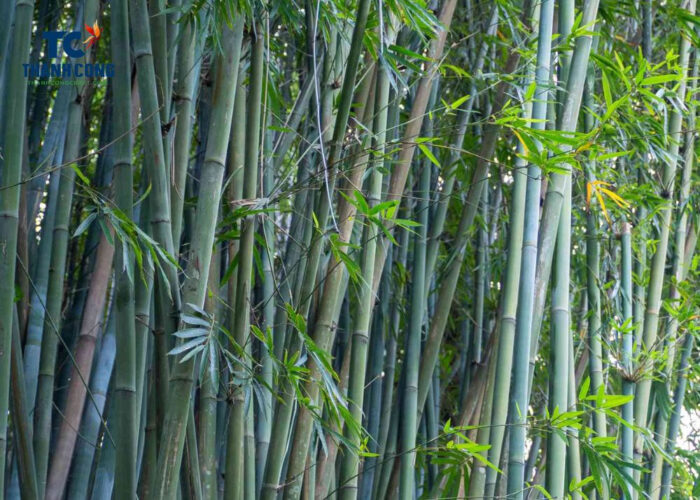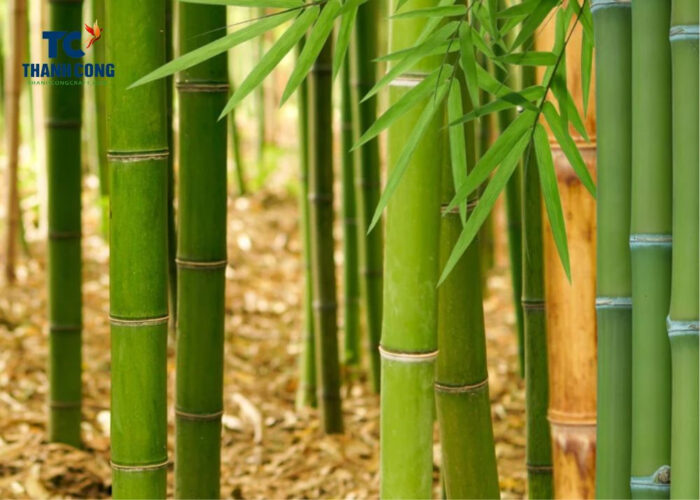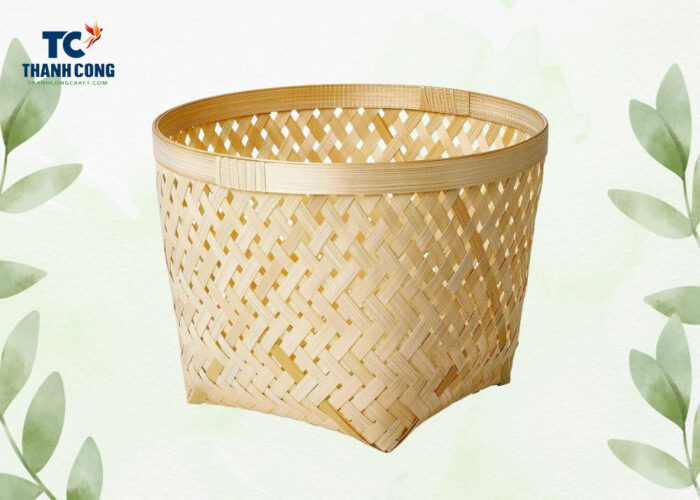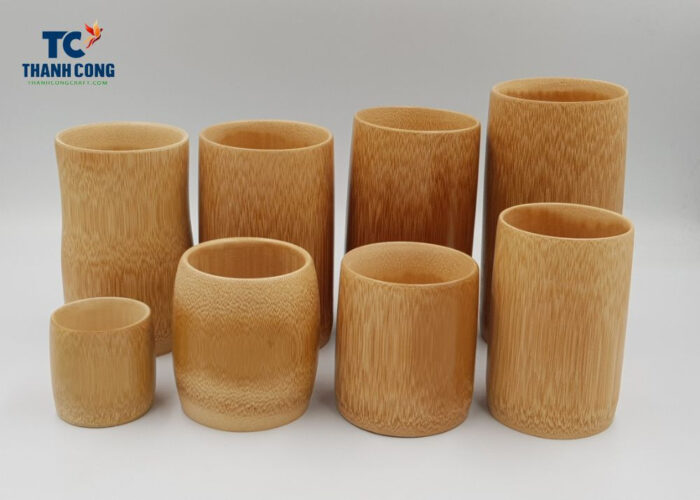Bamboo with its graceful form and adaptable nature, has seamlessly integrated itself into various corners of the world, thriving in diverse climates. The query where is bamboo grown? takes us on a captivating journey across continents and landscapes where this exceptional plant has taken root.
Contents
1. Where is bamboo grown
Bamboo scientific name is “Bambusoideae, which refers to its subfamily within the grass family Poaceae. This subfamily encompasses a remarkable array of bamboo species, each with its own distinct characteristics and adaptations. As a result, the botanical diversity within the Bambusoideae subfamily continues to capture the fascination of researchers, horticulturists, and nature enthusiasts alike.

Where is bamboo from? Bamboo flourishes naturally on five continents such as: Africa, Asia, South America, North America, and Australia. In essence, this resilient plant calls every continent home, save for Antarctica and Europe. Interestingly, this distribution mirrors the presence of diamonds, which are also found across all continents except Antarctica and Europe.
The tropical and subtropical regions of Asia, Africa, and Latin America serve as bamboo’s primary habitats. It extends its reach as far north as the southern United States and central China, and as far south as Patagonia. Additionally, the northern landscapes of Australia are graced with bamboo’s presence.
In its natural setting, bamboo often thrives as secondary vegetation within forests. Remarkably, some bamboos assume a dominant role, as seen in the vast expanses they cover in northeast India and the mountainsides of eastern Africa.
Bamboo’s remarkable adaptability allows it to flourish even under extreme conditions. Certain species defy convention by thriving at altitudes ranging from sea level to a staggering 4000 meters in the Andes and Himalayas, enduring temperatures plummeting well below -20°C. This ability to withstand such hardships further cements bamboo’s status as a resilient botanical wonder.
2. Bamboo Cultivation Practices
For most bamboo species, there are several propagation methods, including rhizome division, root division, culm layering (air layering), branch cuttings, or even growing from seeds. When choosing plants for propagation, it’s advisable to select healthy specimens free from pests and diseases, and preferably those that haven’t flowered yet. Opt for plants that aren’t too young or too mature—around 7-8 months old is ideal for seedlings.
After preparing the planting soil and the chosen propagules, place the seedlings at a 45-degree angle in the hole (for root division), using fine soil to fill the hole and compact it tightly. If using culm layering or branch cuttings, position the propagule vertically in the hole, ensuring that the shoot’s base lies no more than 10cm below the hole’s opening. Fill the hole with soil and firmly compact it.

Following planting, ensure thorough watering to establish strong contact between the roots and the soil. To deter weeds during rainy seasons and maintain moisture in drier periods, consider placing a layer of straw or mulch around the base of the plant, approximately 10-20 cm thick.
These techniques form a thoughtful approach to bamboo propagation, facilitating optimal growth conditions and setting the stage for these remarkable plants to flourish in their new environments.
3. How Does Bamboo Survive?
Bamboo’s remarkable ability to thrive in diverse environments is attributed to its ingenious survival mechanisms. The plant’s sturdy, woody stems serve as natural insulation, safeguarding it against harsh cold temperatures and prolonged droughts. This unique feature enables bamboo to withstand challenging climatic conditions with remarkable resilience.
A key factor in bamboo’s survival lies within its intricate root system. These roots act as efficient water-absorbing conduits, allowing the plant to capture and store water when it’s available. This strategic adaptation empowers bamboo to endure extended dry spells without relying on external sources of hydration or human care.
This adaptability makes bamboo an ideal candidate for regions grappling with limited freshwater resources or susceptible to recurring droughts due to geographic constraints or the effects of global warming. As a testament to nature’s resourceful design, bamboo’s survival strategies echo its capacity to endure and flourish even in the face of adversity.
>> See more: What Is Bamboo Used For? And 10 Uses Of Bamboo
4. How Many Types of Bamboo Are There?
Vietnam is internationally acclaimed for its extensive bamboo cultivation area, holding a prominent position among global leaders. As of the early 2000s, the nation boasts a repertoire of over 70 bamboo species that flourish throughout its expanse. The journey of exploration has persisted, with scientists and researchers making substantial headway until 2005, unveiling a staggering array of more than 190 species spanning 26 distinct bamboo genera within Vietnam. An appreciable portion of these findings remains unnamed, awaiting further classification.
This insightful exploration reveals, among other revelations, the presence of 55 species within the Bambusa genus, with 31 among them yet to receive formal appellations. The Dendrocalamus genus contributes 21 species to this botanical diversity, while the Gigantochloa genus stands with 16 species, and the Indosasa genus makes its mark with 11 species.
5. Applications Of Bamboo In Daily Life
Crafting Essential Household Items
Bamboo renowned for its versatility and eco-friendliness, plays a pivotal role in creating indispensable household items. Its unique attributes make it a top choice for crafting functional and appealing products. From bowls, plates, wholesale bamboo basket and cutting boards to cups, utensils, and storage solutions, bamboo’s lightweight strength and natural charm make it a sustainable alternative.

Crafting Furniture and Decor:
Bamboo furniture brings a sense of natural beauty to living spaces. From chairs and tables to shelves and bed frames, bamboo’s lightweight yet sturdy nature makes it a favorite material for crafting contemporary and sustainable furniture.
In the realm of decor, bamboo’s appeal knows no bounds such as: Lampshades, room dividers, Wholesale Bamboo lampshade and wall hangings crafted from bamboo create a soothing ambiance and a connection to nature. Picture frames and mirrors adorned with bamboo accents offer a unique visual appeal.
Crafting Textiles and Accessories:
Bamboo fibers, transformed into textiles, create garments of exceptional comfort and functionality. From shirts and dresses to undergarments and activewear, bamboo textiles offer a soft touch against the skin, while also being hypoallergenic and eco-friendly.
Bamboo accessories add an earthy and chic dimension to personal style. Bamboo-based jewelry, watches, and sunglasses showcase the material’s adaptability and aesthetic appeal. Bamboo hats and bags merge fashion with sustainability, offering a blend of utility and elegance.
Crafting kitchenware
Bamboo takes center stage in the world of kitchenware, seamlessly combining functionality, sustainability, and aesthetic appeal to elevate the culinary experience. Bamboo’s versatility shines through in the crafting of cooking utensils. Spatulas, Wholesale Bamboo Cups, spoons, and tongs made from bamboo offer a safe and gentle touch to cookware while being heat-resistant and non-scratch. These utensils are perfect companions for both amateur and professional chefs, ensuring a seamless cooking process.

Crafting Gardening and Agriculture
Bamboo’s tall and sturdy culms make it an ideal choice for providing support to climbing plants. Gardeners utilize bamboo stakes to guide vines, ensuring healthy growth and efficient space utilization. Bamboo’s natural elegance also extends to landscaping, where it creates visually appealing barriers, screens, and borders. Bamboo fencing serves as both a functional and decorative element in agricultural settings. It offers privacy, protection, and demarcation, while also being an eco-friendly alternative to traditional fencing materials.


